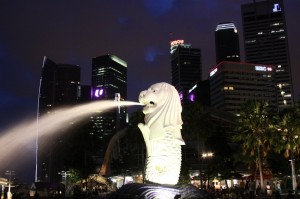 A traveler from Singapore finds his country’s colorful past in present-day Kuala Lumpur.
A traveler from Singapore finds his country’s colorful past in present-day Kuala Lumpur.
It’s 9.50pm in Kuala Lumpur. Our ‘time-travel machine’ is here to take us home to 2003 Singapore.
And for once, the KTM railway train arrived on the dot.
36 hours ago, we were standing at the tail of a long queue snaking from the departure gate to the main entrance of the Tanjong Pagar Railway Station in Singapore. The gate opened slightly after 9.15am for customs clearance. More waiting awaited us beyond the customs booths. But what’s there to complain about when the train was nowhere in sight?
35 minutes later, I was sitting, not inside the train, but on hard cement floor, flipping and re-reading the newspapers to kill time. My excitement had surrendered to self-doubt and mild panic: “Why are people boarding that train on the other side? Is that our train?” My friend couldn’t hold his bladder any longer and had rushed to the restroom. At that moment, the train appeared. Finally. By the time it left and arrived in KL, it would be dinnertime. How nice.
Trying to make up for lost time, the train zoomed into the Malaysian territory, and the concrete jungle of Singapore gave way to rolling hills of verdant oil palm trees, barren banana plants and small-scale vegetable farms. Occasionally, there would be cattle grazing. And chickens roaming freely near attap houses with zinc roofs and red wooden facades. Then it’s back to more oil palm trees.
Basically, that was the scenery for the next 6 hours. My friend confidently predicted that even if we were to travel the same route 10 years from now, we would still be greeted with the same old sights. We knew at that instant we were back in time.
Who were we kidding? KL is very much the archetypal modern cosmopolitan metropolis. But stray away from the sky-bound buildings and mega shopping centers, and stroll into some obscured lanes lined with dilapidated pre-war shophouses, the present becomes the past.
Even near the swanky shopping belt of Bintang Walk, a slice of the old world lives on. Watched over by the soaring Menara Tower and other skyscrapers, roadside food stalls that have been around for decades continue to prosper, filling every table with mouth-watering local fare like Penang laksa and satay and salivating customers. For an indication of how good business was, we had to linger for 10 long minutes before we came across an empty table.
Coming from Singapore where roadside dining is associated with the sanitized and contrived Food Street in Chinatown, soaking in the cornucopia of sights, smells and sounds here was like savoring the appetizer. Sitting at dingy tables and chairs along the littered road, oblivious to the noisy chatter from the next table, we watched perspiring maestros cook up a smoky storm of oily fragrance in their open-air kitchens while we eagerly anticipated the arrival of our orders.
Even the humble wanton noodles evoked a sense of deja vu; it tasted exactly like what I had as a child. The noodles were sweeter and not at all soggy, the roasted pork fragrant and crisp and the soup didn’t taste like seawater. It’s a pity they don’t make the same noodles in Singapore anymore.
People back home used to eat at roadside stalls too. That was until such practices were deemed ‘unhealthy’ and along with the crowded squatters of yesteryears, were swallowed by rapid urbanization. I sometimes wonder what it was really like to slurp soup noodles while squatting by the roadside. I guess I would never find out but this nostalgic meal came pretty close.
And for the record, neither of us suffered from food poisoning! Rather, the wanton noodles, stingray and fried kway teow (flat noodles) had refueled our energy for some bargaining action. So, we took the light rail to Petaling Street. On our brisk walk towards its pasar malam (night market), we stopped briefly to admire a large lavishly decorated Chinese temple. Our pace lost further momentum when we encountered a rare sighting across the street: a shop selling tradition wooden coffins. Looking at the withering figures manning the shop, I harbored an ominous thought and then hoped that the days of this vanishing trade were not numbered. But the bright lights of consumerism beckoned.
Joining other slow-moving bodies jamming the narrow lanes, we examined the goods, haggled amicably over prices, moved on and mission impossible accomplished! Our friend in Singapore would be so pleased with the fake Nike wallet and name-card holder she had pestered us to buy and at her ‘reasonable’ budget of RM30.
While most of the watches, wallets, Mont Blanc pens, bags, clothes, and mobile phone accessories sold at the bazaar are imitations, much of Petaling Street is original. My slightly older friend even waxed lyrical about how much the riotous ambience reminded him of the bustling Bugis Street night market in Singapore during the 1970s.
His observation reverberated in my head, wondering if Petaling Street indeed resembled the old Singapore, before modernization wiped out local color and when old buildings were not sheathed in ridiculously bright retro colors. Much of the old buildings here are rather drab, with paint on walls peeling, signboards fading, floor tiles popping and gates already rusty. Yet I actually find a gray Petaling Street more appealing, like a grand old dame with character, unafraid of showing her true age.
The next morning started literally on a high note, as we conquered 272 steps to marvel at Mother Nature’s breathtaking creation called Batu Caves. We were however brought down to earth when we found ourselves grounded at the foot of the Petronas Towers; free tickets to the sky-bridge were all snapped up. Famished and overwhelmed by the maddening shopping crowd, we broke for a satisfying lunch of rice, fried potatoes, ikan (fish) curry and ayam (chicken) with chillies at Central Market.
After the no-show at the Petronas Towers, Central Market was a pleasant surprise. Built in the Art Deco style in the 1920s, it used to be a wet market (so-called because of the hawkers’ practice of splashing the floor with water). But Central Market was almost crushed by the wrecker’s ball when it was earmarked for development in the 1980s. Thankfully, the Malaysian Heritage Trust came to its rescue.
Today, the raw stench had long dissipated and the meat and vegetables sellers replaced by aspiring Van Goghs putting finishing touches to their masterpieces. The Central Market is now an arts enclave of sorts where stalls showcase cultural produce that range from the interesting to the proverbial: Chinese calligraphy brushes and seals, beaded jewellery, traditional kites, rattan baskets, and bowls made of coconut husks.
On the second level, we uncovered a treasure trove without having to divulge ‘Open Sesame’. Inside the junk shop, we treaded gingerly between racks cramped with curios and antiques, careful not to trample or topple the gramophones, ancient Malay kris (daggers), exquisite betel nut cases and wooden mooncake moulds with our bulky backpacks. Had the owners displayed the price tags, I would have probably lost my balance and crushed some fragile relics into pieces!
Interestingly, for a tourist attraction, local visitors greatly outnumbered the tourists. Mystery’s solved when we walked into a full-house food court and a queue outside the rather out-of-place Mrs Fields and ice cream parlor. Ah the crowd-pleaser that is food, glorious food.
With a few hours left, we ended our jaunt in KL with an architecture tour that took us to the exact birthplace of the city. The splendid Jameq Mosque sits close to the confluence of the Klang and Gombak rivers (now sadly stagnant, shallow and concretized), where KL began as a tin mining town.
Minutes later, standing at the fringe of Merdeka Square – an empty field of tranquility where Malaysia’s independence was declared on August 31, 1957 – it suddenly struck me how physically alike Singapore and KL were. One can find a Little India and Chinatown in both cities. And Merdeka Square with its grand colonial structures around could easily fool the uninitiated eye into thinking that it’s the Padang (‘field’ in Malay) in Singapore. At least, until the gigantic onion domes of the majestic Sultan Abdul Samad building across the road became too obvious to ignore. Whatever it is, I am optimistic that both fields will remain constantly undeveloped in these ever-changing cities, given their importance as symbols of national pride.
In our frantic fear of not finding the new but personality-deficient KL Sentral train station, the thought of photographing the imposing star-studded Dayabumi Complex and the elegant old Railway Station completely slipped our minds. If only trains still collect passengers at the 1910 Railway Station – now an opulent hotel – it would have been the perfect pit stop to end this historical journey.
As the train cruises, halts and breaks the still of the night and dashes my hopes of catching twenty winks, I think back on my maiden trip to KL.
KL has never ranked high on my list of must-visit places. Maybe its proximity is its Achilles heel – my definition of traveling invariably involves taking a plane and flying to some further away destination. And I am sure my bias is also partially tainted by the on-off, hot-cold diplomatic relationship between our two countries.
Fortunately, pent-up wanderlust, heavy workload and a Lonely Planet 6 Degrees episode on KL conspired to bring this next-door city to my traveling radar.
Before our arrival, I expected to be impressed by the superlatives KL boasts – until recently, the tallest building on earth (do we need to name the obvious?) and the world’s longest flagpole at Merdeka Square. Instead, I left with a newfound admiration for the city’ respect for its past. A legacy that is remembered not only through the preservation of national monuments but more importantly, in the giving of space for local color to survive and even thrive.
In where I come from, historical buildings and sites are often restored to their former glory before being reduced into yet another shopping complex (Majestic Cinema), some short-lived upscale restaurant (Thong Chai Medical Hall) or horror of all horrors, theme parks (Haw Par Villa). Imagine my relief when I saw the Central Market enjoying a new lease of life, with its dull market floor tiles intact. Petaling Street can even teach us a lesson or two about conservation: sometimes, the best way to preserve heritage is to leave it as it is.
Most of all, and with a tinge of sadness and irony, I can’t help but feel a sense of gratitude towards this city for safekeeping and introducing me to a charming part of my country’s past – the colorful roadside stalls and night markets as well as the messy but authentic Southeast Asian streetscape that had disappeared for good and almost forgotten back home.
I couldn’t agree more with Charles Dickens, who once wrote, “Every traveler has a home of his own and he learns to appreciate more of it through his wanderings.” But in this case, ‘home’ is a ‘Singapore’ from the distant past and now, in her neighbor’s backyard.
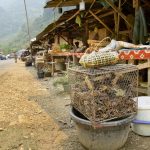
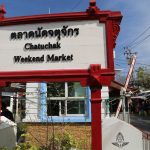
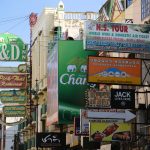
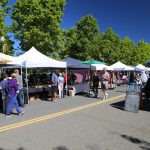
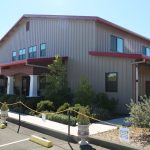
Leave a Reply